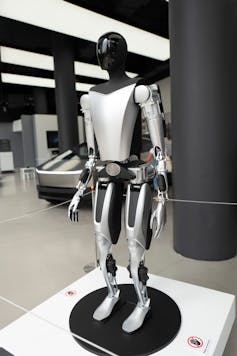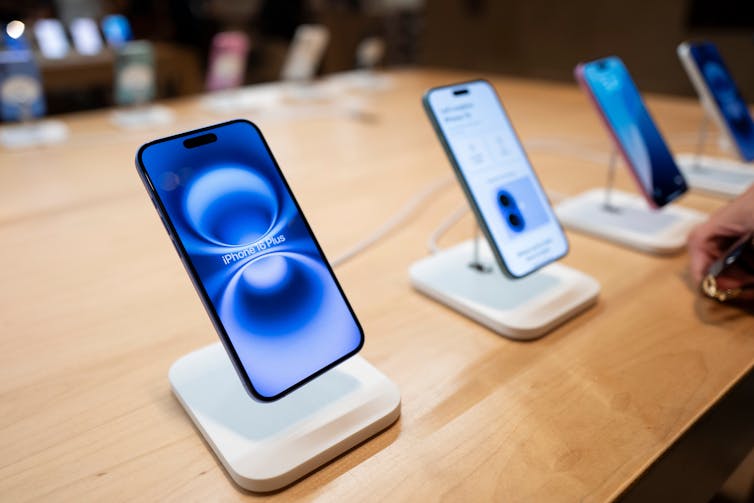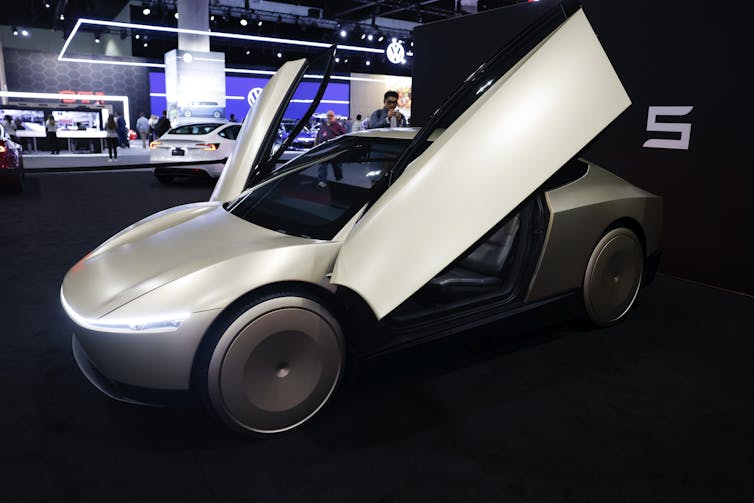All in all, 45 years is not a long time. In 1980, it took me three weeks to run a computer program written in Cobol programming languagewhich worked with punch cards. Each card represented one line of code and required several re-punches to correct errors. Eventually I would have a working program that would do something useful.
Times have changed rapidly in technology: now my mobile phone has vast processing capacity compared to the machine that processed this Cobol program. Thanks to artificial intelligence (AI) tools, this same phone is capable of instantly translating between languages during a live call, among other features.
With eye-catching announcements coming one after the other, what can we expect in 2025 from the world of technology? Here are seven developments to watch.
1. AI agents come into their own
Unsurprisingly, we are likely to see further significant developments in the field of AI. One area likely to take off is use of AI agents. These are intelligent programs to which humans give objectives and which determine the best ways to achieve these objectives. Agents can write computer code, which could have a big impact on the way tech companies work and allow people without advanced coding skills to develop programs, apps or games.
You might also see car factories without people, running with robots driven by AI agents. In theory, mortgage applications could be assessed and approved by agent technology. Individual apps on a smartphone could be replaced by an agent interface that performs multiple tasks for the user.
A combination of agent technology and robotics could be revolutionary. We are reaching a point where robots do not just imitate the tasks of humans, but reason and respond directly to us.

Raman Shaunia / Shutterstock
One candidate for hosting AI agent technology is Optimus, a humanoid robot built by Tesla. Elon Musk says electric car maker will start use Optimus for tasks within the company starting in 2025. He added that the automaton could be ready to sell to other companies by 2026.
Agents are tailor-made for industrial tasks such as project management. The consulting firm Gartner suggests that by 2030, around 80% of project management tasks will be performed by AI.
2. Personalization, with the help of AI
In education, the emphasis has traditionally been on linear curricula, with predetermined entry and exit points spanning several years. Imagine a study program specifically tailored to each student based on their experience, skills and abilities. Tailored study programs student-centered are already being explored in the United States with AI.
These are not only personalized with regard to content and curriculum, but also recognition of the student’s particular needs or even what the learner may be feeling at any given moment. This may include AI that adjusts learning activity and studying based on the amount of sleep you had last night, which is linked to smartwatch data.
Education isn’t the only area where AI could help with personalization. Management consultancy Accenture suggests that private companies be able to train their own large custom language models, the technology behind AI chatbots such as ChatGPT. These could be trained with data specific to particular business areas, making them more effective for those businesses. But these companies would have to use billions of data. We will see progress towards this goal in 2025.
Small Language Models (SLM) are developed to perform specific tasks more efficiently. They don’t need to be trained on as much data and require less computing power. This means they can be used more easily on so-called “edge” devices – smartphones, tablets and laptops – without relying on computing resources hosted in the cloud.
3. Towards practical quantum computers
Advances in quantum computing could lead to machines capable of solving complex tasks beyond the capabilities of most classical computers. Researchers stopped trying to break records in terms of the number of basic processing units, called qubits, and turned their attention to correct errors to which quantum computers are currently subject. This is a step toward practical quantum computers that have useful advantages over classical machines.

Raman Shaunia / Shutterstock
4. Blend physical and virtual worlds
Augmented reality, virtual reality and mixed reality could be used more widely. Virtual reality immerses users in a computer-generated world. Augmented reality superimposes computer-generated elements on the real world, while the latter remains visible. Mixed reality refers to a set of immersive technologies, including augmented reality, that offer different “blends” of physical and virtual worlds.
There are already a number of head-mounted displays (HMD) who can support these technologies. These include Apple Vision Pro And Meta’s Quest Helmet. In 2025 we will likely see new products and refinements from companies like Meta, Apple and others.
5. Benefits of Blockchain
Blockchain technologywhich allows records to be stored on a network of computers, is expected to affect supply chains and different sectors, from healthcare to finance. Blockchain increases transparency and traceability, enabling the tracking of products from origin to consumer, it also provides enhanced security and improved efficiency through automated processes.
Patient data in healthcare could be secured using blockchain technology. Data exchange could become seamless and medical supplies could be tracked. Financial transactions could become more robust, faster and less expensive and there would be a greater degree of financial inclusion. This would provide access to a wider group who may not have had access to banking or lending services before.
6. The dawn of 6G communications
We will benefit from faster connectivity, with the introduction of 6G wireless communication networks. The 6G technology standardization process will start in 2025. Clear global standards for 6G and compatibility between networks are essential to the success of the technology.

Caroline Brehman / EPA Images
7. More advanced autonomous driving technology
Autonomous vehicles are also expected to see a number of advancements in the future. Self-driving cars are classified in six levelsaccording to their autonomy – from 0 (fully manual) to 5 (fully autonomous). Autonomous taxis currently deployed in American cities like San Francisco are at level 4 (high driving automation).
They can handle most driving tasks without human intervention, but with some restrictions. In 2025, we will likely see progress towards Level 5. This is classified as full autonomy and describes vehicles that operate without any human intervention. Mercedes will increase speed of its Drive Pilot autonomous driving system in 2025 and Tesla is develop your own Robotaxiwhich should be available “before 2027”, according to Elon Musk.
We can expect technology to be able to accomplish tasks that were once the exclusive domain of humans. Will be able to complete work tasks and report. This will lead to efficiency gains and big changes in work. We will also see technology that will improve our leisure time and quality of life.


